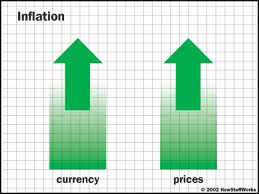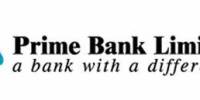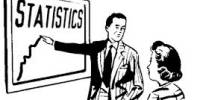Introduction
Inflation is defined as a sustained increase in the general level of prices for goods and services. It is measured as an annual percentage increase. As inflation rises, every dollar you own buys a smaller percentage. The value of a dollar does not stay constant when there is inflation. The value of a dollar is observed in terms of purchasing power, which is the real, tangible goods that money can buy. When inflation goes up, there is a decline in the purchasing power of money. For example, if the inflation rate is 2% annually, then theoretically a $1 pack of gum will cost $1.02 in a year. After inflation, your dollar can’t buy the same goods it could beforehand.
There are several variations on inflation:
- Deflation is when the general level of prices is falling. This is the opposite of inflation.
- Hyperinflation is unusually rapid inflation. In extreme cases, this can lead to the breakdown of a nation’s monetary system. One of the most notable examples of hyperinflation occurred in Germany in 1923, when prices rose 2,500% in one month!
- Stagflation is the combination of high unemployment and economic stagnation with inflation. This happened in industrialized countries during the 1970s, when a bad economy was combined with OPEC raising oil prices.
- In recent years, most developed countries have attempted to sustain an inflation rate of 2-3%.
Inflation

Causes of Inflation
Economists wake up in the morning hoping for a chance to debate the causes of inflation. There is no one cause that’s universally agreed upon, but at least two theories are generally accepted:
Demand-Pull Inflation – This theory can be summarized as “too much money chasing too few goods”. In other words, if demand is growing faster than supply, prices will increase. This usually occurs in growing economies.
Cost-Push Inflation – When companies’ costs go up, they need to increase prices to maintain their profit margins. Increased costs can include things such as wages, taxes, or increased costs of imports.
Costs of Inflation
Almost everyone thinks inflation is evil, but it isn’t necessarily so. Inflation affects different people in different ways. It also depends on whether inflation is anticipated or unanticipated. If the inflation rate corresponds to what the majority of people are expecting (anticipated inflation), then we can compensate and the cost isn’t high. For example, banks can vary their interest rates and workers can negotiate contracts that include automatic wage hikes as the price level goes up.
Problems arise when there is unanticipated inflation:
- Creditors lose and debtors gain if the lender does not anticipate inflation correctly. For those who borrow, this is similar to getting an interest-free loan.
- Uncertainty about what will happen next makes corporations and consumers less likely to spend. This hurts economic output in the long run.
- People living off a fixed-income, such as retirees, see a decline in their purchasing power and, consequently, their standard of living.
- The entire economy must absorb repricing costs (“menu costs”) as price lists, labels, menus and more have to be updated.
- If the inflation rate is greater than that of other countries, domestic products become less competitive.
Is Inflation Good or Bad?
So I was reading my American History textbook and read about the Populist Party that was formed by farmers in 1892. Though they wanted other things, their main goal was to achieve inflation.
Every time I heard about inflation in my World History class, it was described as something unwanted or bad because it decreased the value of money.
Why would the Populist Party want inflation if it just decreases the worth of money? Is inflation good or bad?
I don’t really need to know, but it’s something that I find confusing and would like to know. Thanks.
Inflation is both good and bad. Like food, the right amount of inflation is good; too little or too much is bad.
In spite of what people such as SDD say, a steady rate of inflation has no effect on debt. A steady inflation rate is included in the interest rates and so the amount paid back is not reduce or the debt reneged on in any way:
It is only when the inflation rate increases between the time of the loan and the time it is paid off that the borrower benefits. But that is a one-time effect and the members of the Populist Party were farmers who borrowed every year.
Still, a low inflation rate (2-4%) can be kept stable while still spurring economic growth. With too low an inflation rate, economic growth goes down:
Too high an inflation rate and the inflation can’t be controlled and there are all sorts of additional problems with no additional benefits.
The sort of inflation you probably heard of in World History class was not just high inflation but hyperinflation.
Unlike high inflation, which is painful but can be survived, hyperinflation destroys an economy.
Good Inflation, Bad Inflation
Why does deflation have a depressing effect on the economy? Two reasons. First, it reduces money incomes while debt stays the same, so it worsens balance sheet problems, reducing spending. Second, expectations of future deflation mean that any borrowing now will have to be repaid out of smaller wages (if the borrower is a household) or smaller profits (if the borrower is a firm.) So expected future deflation also reduces spending.
So, does a rise in food and energy prices do anything to alleviate these problems? No. In fact, it makes them worse, by reducing purchasing power. So while the commodity surge may temporarily lead to rising headline prices in Japan, the underlying deflation problem won’t be affected at all.
In a way, this is another illustration of the need to differentiate among inflation measures. It’s not exactly the same as the usual case for focusing on core inflation, but it’s related. And once again, the point is that looking at “the” inflation rate is a bad guide for policy.
How about making increased revenue part of the remedy?
And not just a return to Clinton-era tax rates.
sometimes referred to as the cruelest tax, but that’s more myth than fact. A little inflation is not a bad thing, actually, and even periods that have seen elevated inflation levels produced, on balance, more winners than losers.
On the other hand, a world without inflation would be as brutal and unforgiving as the atmosphere of Venus — economically speaking, anyway. Most assets would decline in value, and business profits would evaporate, along with any chance of gainful employment. The only people who would benefit would be creditors, and then only if they were lucky enough to find people who wanted to borrow their money. That would be doubtful, since business and investment opportunity would be nil, providing little reason to be a borrower.
The belief that inflation is harmful stems from the perception that a halt to rising prices would help one’s individual income go further. However, this scenario disregards the accompanying consequences for income. If inflation were zero, or if prices were actually falling (a condition known as disinflation or deflation, depending on the severity), business profits would fall, too. After all, in a competitive economic environment, price gains normally tend to be limited. This forces businesses to earn money by cutting costs and being more productive. Labor costs would certainly be among the costs businesses would want to reduce, which would cause hiring to stagnate or fall along with individuals’ income.
Is Inflation Good?
A mild inflation, a slightly larger volume of currency in the economy than the amount needed for transactions and investment, is better than deflation which is when there is less currency in the economy than what is required. A slightly inflated dollar is an optimistic statement which says that things are going to get better and that slightly more money is available for spending, borrowing and investing. Yet such inflation only works if it is a natural byproduct of bullish spending and investing.
There are three means in which the dollar can be inflated. While one of those means is good and healthy, the other two are bad and artificial. Good inflation occurs from the bottom up and is a reflection of genuine need for money in order to keep up with production and demand. Such inflation reflects both production and an optimistic projection of growth and, as such, the slightly inflated dollar soon finds an equilibrium as the economy grows.
Bad inflation occurs when the government either prints money to pay for its budget or borrows money to stimulate or prop up the economy. When the government prints money, what the Federal Reserve calls “monetizing debt” the workingman’s dollar is robbed of its value. The artificially inflated dollar thus becomes worth 90 cents, or 80 cents depending on how many fiat dollars are pumped into the economy. The cost of business and private transactions thus must go up in order to make up for the devalued dollar. Prices go up and this hurts people on fixed incomes. This form of inflation is a back-door tax that particularly comes down heavy on the middle class and the poor. The new paper dollars do not reflect an improvement in production or an increase in demand.
The other form of bad inflation is stimulus borrowing which was the approach of the Obama Administration and several other previous administrations. This involves borrowing money from the banks and private investors, money that has to be eventually paid back at interest with taxpayer dollars, and then spending that money into the economy. While this has some simulative effect, the money borrowed is controlled by the government that authorizes the borrowing and it is thus doled out to friends, those who would perpetrate the government’s power by creating beholden allies through money. This is exactly how the Obama Administration used the almost trillion dollars they borrowed in 2009, a debt known as the stimulus package.
The more natural approach to a stimulus would be to place a moratorium on taxes or to cut taxes. This approach would be better than stimulating the economy with either borrowed money, which enhances the power of the government and creates debts that will eventually become due, or turning on the printing press and devaluing the workingman’s dollar and debauching savings. Leaving more money in the hands of those who create capital, or own capital, through tax deduction would result in more available dollars and the mildly inflationary stimulation the economy needs. Business, knowing that taxes would not be going up, would be more inclined to spend and invest rather than to shelter their profits. Such spending and investment would lead to economic expansion, jobs, and greater prosperity at all levels.
Yet how could this be done while maintaining all the functions of government that we have come to expect? For starters, we should demand that Congress pass a balanced budget amendment that would then be ratified by the states. A national balanced budget, the same that presently exists in over 20 states, would force the government to make the necessary cuts. Does anyone doubt that every agency of government, including defense, could immediately cut their budget by at least 5% without affecting basic services?
The President should be given the line item veto which would mean that the executive would be in a position to cut out pork-barrel spending when it is larded into congressional bills. This would force Congress to vote on spending as a stand-alone and out in the open. This would also mean that the President would be held directly accountable for signing specific spending bills.
In order to further stimulate the economy, Congress should hold the line on approving any new taxes, cut capital gains, and offer a moratorium on overseas corporate profits. Regulations should be enacted to make it easier for businesses at all levels to offer their goods and services while regulations protecting the environment should be left in place. Public policy should be oriented toward encouraging savings as opposed to debt and toward private capital creation and accumulation as opposed to government transfer of wealth.
References:
- www.google.com
- www.weikepedia.com
















